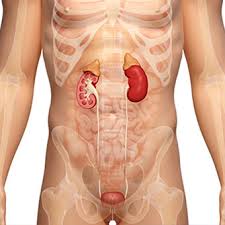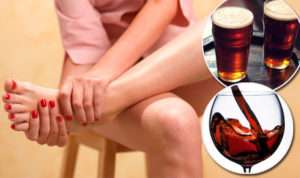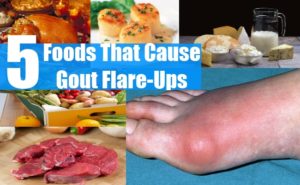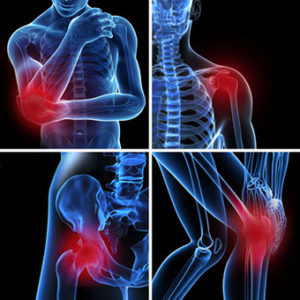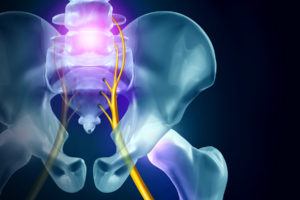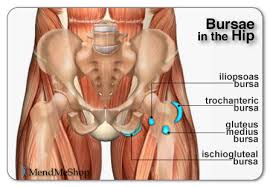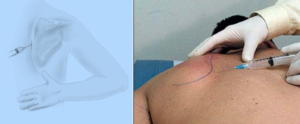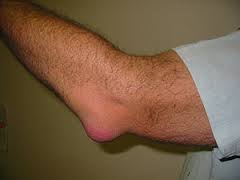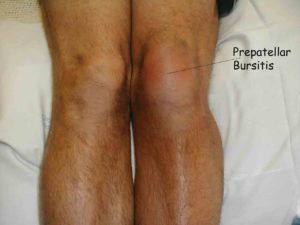Archives
Part I Your health in dealing with stress-what is it, know body trigger reactions, how to pick up on stress, the challenges we all face/what to do, & human responses at Acute vs Chronic Stress!
Life can be stressful—you may feel stressed about performance at school, traumatic events (such as a pandemic, a natural disaster, or an act of violence), or a life change. Everyone feels stress from time to time.
What is stress?
Stress is the physical or mental response to an external cause, such as having a lot of homework or having an illness. A stressor may be a one-time or short-term occurrence, or it can happen repeatedly over a long time.
What is anxiety? Anxiety is your body’s reaction to stress and can occur even if there is no current threat.
Trigger Reactions to Stress by the human body:
Increased heart rate and respirations. Increased blood pressure. Upset stomach, nausea, diarrhea. Increased or decreased appetite which may be accompanied by weight loss or gain.
If that anxiety doesn’t go away and begins to interfere with your life, it could affect your health. You could experience problems with sleeping, or with your immune, digestive, cardiovascular, and reproductive systems. You also may be at higher risk for developing a mental illness such as an anxiety disorder or depression.
Everyone experiences stress, and sometimes that stress can feel overwhelming! You may be at risk for an anxiety disorder if it feels like you can’t manage the stress and if the symptoms of your stress:
- Interfere with your everyday life.
- Cause you to avoid doing things.
- Seem to be always present.
Learning what causes or triggers your stress and what coping techniques work for you can help reduce your anxiety and improve your daily life. It may take trial and error to discover what works best for you. Here are some activities you can try when you start to feel overwhelmed.
What to do if stress triggers and to help yourself ; when picking up on it; some ideas:
- Keep a journal.
- Download an app that provides relaxation exercises (such as deep breathing or visualization) or tips for practicing mindfulness, which is a psychological process of actively paying attention to the present moment.
- Exercise, and make sure you are eating healthy, regular meals.
- Stick to a sleep routine, and make sure you are getting enough sleep.
- Avoid drinking excess caffeine such as soft drinks or coffee.
- Identify and challenge your negative and unhelpful thoughts.
- Reach out to your friends or family members who help you cope in a positive way.
One way of looking at life is whatever challenges comes your way know you will survive and for any losses you may experience when looking back on them take the positive aspects or memories not the negative that builds a bad effect on you (Ex. Insomnia to depression to high blood pressure to alcoholism to drugs).
A positive effect can be as simple as a smile when reflecting memories, which FYI allows less frowning that will cause less wrinkles on the forehead, as we get older. Sometimes it’s not that simply and when it gets harder take up a constructive way of dealing with it (Ex. Work out at your level, walking, singing, go to a comedy movie, get together with friends go out, and do anything that gets your mind off of the stress and even out of your body through work out at the gym to just biking or walking.).
For starters stress is a body reaction to CHANGE. How to you look at change? Easy, positive in someway! It may not appear easy at first but try to look at this change as a sense of difficulty yet a challenge with a victory in the end, if approached right.
Let us take the following challenges we face in life, for example – Having a child leave home for college or marriage, losing a home with this economy, a loss of a friend in your life: How do you look at these experiences positive?
1.) Well for the child I would be so happy for her or him starting college life with my worries but know I raised her or him well and if he makes mistakes on the way he or she will learn to get up off the ground and fix them knowing he or she can come to me or dad whenever he has the need or if we sense a problem we would address it (Its part of life=growing up).
2.) Another aspect to look at regarding this stress is there is loss in the parent role so fill up that loss with a new hobby, or get active in whatever organization you are in (Ex. Church, Temple, School, to just taking up ceramics or do more traveling with your spouse and friends). Help out the community you live in and assist in organizations that you feel do help the society in your city or town or village you live in. I had my falls with the stresses that I have come across in my lifetime but you got to get up every time to stand again, some quicker than other times. Love ones we loose I deal with in a positive way in knowing their in heaven, a lot better than here also looking at the fond memories I have of that person with knowing I will see them again when I pass on but trying to keep active with my life which now is hard but with my significant other helping me to get started.
3.) How do you deal with losing a home with this economy or a business as well appreciate the good memories you had when you had the home and pick up starting a new life elsewhere with making it a journey down the yellow brick road leading you to where the rainbow is at the end; don’t look at it as a loss. It may be miserable at first but being a nurse seasoned I know there is always someone worse than I am and no I am not rich (far from it) that I can pick up and by another home.
4.) If you lost a business in the time of COVID-19 due to this long stretch of lockout particularly in NY (take the city alone) or if you just lost a business in general. It is a hard challenge to come across but there is a new plan and journey for you to restart. My family was there in losing business or a job including my husband in this COVID-19 but we resolved all job problems and with saving our money, it took time, but we survived. We have each other and thank God we never lost our home we can say. We can make through anything as long as we have each other and this is not a happy episode of “Little house on the Prairie” but knowing how to look at life’s challenges positive with negative feelings at first, which is only expected.
The same as Erickson’s stages of death; first denial to anger to bargaining to depression to acceptance and will relive these steps over again during your challenge but will beat it with having a positive approach and knowing how to use effective methods to let your stress go. Know you will have those Erickson steps replaying over, not even in those steps directly 1 through 5 but know what to do when you relive them like work out, go to a volunteer organization and help out or whatever makes you feel better that does not hurt your health but help it in a positive approach.
Dealing with losing a friend or terminal friend, again the way I look at it is I appreciate the time I had with her or him and know they haven’t left me in spirit (if deceased). If the person is still living know there are reasons for everything; whatever the cause was for the reason for the relationship in parting, divorce or death for example. When out of my control I think of how I had a good friendship as opposed to never having one with that individual or thinking I will never see them again. I accept that nothing lasts forever or indefinitely, with appreciating the time I had with the person and money is just monetary with hoping it gives me good memories if I loose or choose to ever leave it (like a home, car, etc). I try to cherish each day for being given that gift by God to have ever have met that person and was able to spend time with that person.
Ending note, I look at life this way, whatever positive entity comes in my life may be taken away from me and I should appreciate every moment I spend with that person or creature or career or job or home in my life that I love so much (including my life span that only upstairs knows how long that time factor will be but I try to live a life at its healthiest optimal level with practicing positive behavior which is knowing whatever stressors come my way there is always someone is worse off and thank God for the life I was given which makes me a strong person in facing everything that has come my way, so far. What has probably helped me is being a RN for over 35 years and working in so many specialty areas that made me see people worse off than me in health and more.
If I don’t deal with stress like this than I can expect complications that may arise, just like for anyone else who looks at challenges coming their way in a negative sense. You commonly see stress become a negative experience when a person faces continuous challenges/stressors without relief or relaxation between them. The ending result is the person becomes overworked and stress-related tension builds. Stress that continues without positive resolution at some level can cause a condition called distress, which is a negative stress reaction.
The physical reactions that happen to your body due to negative stress can be = negative symptoms there is both acute vs chronic.
Stress is a normal part of life; the ones you build up one over another with no resolving them make the stress worse!
Acute VS Chronic Stress to the human body:
Many events that happen to you and around you — and many things that you do yourself (Ex. Work 40 to 60 hrs a week in a highly stressful job, like a policeman) – will put stress on your body.
You can experience stress from your environment, your body, and your thoughts. You can also cause the stress to impact your body with first just signs and symptoms (s/s) developing, that are listed above, but without relief of the stress these s/s can lead you into a disease/illness forming or even make the diagnose (s) you already have even worse.
Many signs and symptoms pick up when exposed to continual stress or stresses that just build up on top of each other causing some people in developing unhealthy habits, poor dieting, and the lack of desire to be as active as they were which in turn develops conditions that would not have occurred if this negative behavior didn’t happen over a long period of time which has occurred to me and come back but get on top of it or it gets harder to beat!!
This behavior with the stress or stresses you are experiencing increases the probability of health conditions starting to take place in your body or if you’re with certain diagnoses already the stress can possibly impact your body by worsening the condition.
1.) Acute Stress to the human body ( a stress response over short term, immediately reacting):
-Elevated high blood pressure –Headaches –Chest Pain –Upset Stomach –Insomnia –Grinding of the teeth –Jaw Tension –Teeth grinded down –Irritability –Anger –Panic episodes –Vasoconstriction to our vessels causing increases to the heart rate –Decreases sex drive –Depression (Research even suggests that stress also can bring on or worsen certain symptoms or diseases.)
Stress costs American industry more than $300 billion annually. The lifetime prevalence of an emotional disorder is more than 50%, often due to chronic, untreated stress reactions.
2.) Chronic Stress to the human body (a stress response over long term stress=medical conditions arrising):
-ADD or ADHD –Panic disorders –High blood pressure –Anti-arrhythmias -Cardiac Disease -Diabetes 1 or Diabetes 2 -Stroke –Irritable Bowel Syndrome –Weight Gain/Obesity –Fibromyalgia –Complex Regional Pain Syndrome –ETOH -Depression and so much more.
Learn how to beat stress and help your health and no one can do it but do! Today we learned what stress is, trigger reactions by the body in stress, what to do if it triggers, the symptoms immediate vs. long term stress challenges we come across in life. Check out tomorrow’s topic Part II – tips on dealing with stress!
.
QUOTE FOR MONDAY:
“GOUT DIET GOALS:
Achieve a healthy weight and good eating habits
Avoid some, but not all, foods with purines
Include some foods that can control uric acid level
A good rule of thumb is to eat moderate portions of healthy foods.
DIET DETAILS:
uric acid levels and reduce the number of gout attacks is your goal!
The general gout-diet recommendations:
- Weight loss. Being overweight increases the risk of developing gout, and losing weight lowers the risk of gout. Research suggests that reducing the number of calories and losing weight — even without a purine-restricted diet — lower the uric levels and lessens the overall stress on joints.
- Complex carbs. Eat more fruits, vegetables and whole grains, which provide complex carbohydrates. Avoid foods and beverages with high-fructose corn syrup, and limit consumption of naturally sweet fruit juices.
- Water. Stay well-hydrated by drinking water.
- Fats. Cut back on saturated fats from red meat, fatty poultry and high-fat dairy products.
- Proteins. Focus on lean meat and poultry, low-fat dairy and lentils as sources of protein.
- Organ and glandular meats. Avoid meats such as liver, kidney and sweetbreads, which have high purine levels and contribute to high blood levels of uric acid.
- Red meat. Limit serving sizes of beef, lamb and pork.
- Seafood. Some types of seafood — such as anchovies, shellfish, sardines and tuna — are higher in purines than are other types. But the overall health benefits of eating fish may outweigh the risks for people with gout. Moderate portions of fish can be part of a gout diet.
- High-purine vegetables. Studies have shown that vegetables high in purines, such as asparagus and spinach, don’t increase the risk of gout or recurring gout attacks.
- Alcohol. Beer and distilled liquors are associated with an increased risk of gout and recurring attacks. Moderate consumption of wine doesn’t appear to increase the risk of gout attacks. Avoid alcohol during gout attacks, and limit alcohol, especially beer, between attacks.
- Sugary foods and beverages. Limit or avoid sugar-sweetened foods such as sweetened cereals, bakery goods and candies. Limit consumption of naturally sweet fruit juices.”
MAYO CLINIC (https://www.mayoclinic.org/healthy-lifestyle/nutrition-and-healthy-eating/in-depth/gout-diet/art-20048524)
Part II What is Gout? Knowing what can increase uric acid in the body causing gout & what severe conditions can develop with gout & what risk factors puts you at risk for gout.
You’re more likely to develop gout if you have high levels of uric acid in your body.
Factors that increase the uric acid level in your body include:
- Medical conditions. Certain diseases and conditions make it more likely that you’ll develop gout. These include untreated high blood pressure and chronic conditions such as diabetes, metabolic syndrome, and heart and kidney diseases.
- Family history of gout. If other members of your family have had gout, you’re more likely to develop the disease.
- Age and sex. Gout occurs more often in men, primarily because women tend to have lower uric acid levels. After menopause, however, women’s uric acid levels approach those of men. Men also are more likely to develop gout earlier — usually between the ages of 30 and 50 — whereas women generally develop signs and symptoms after menopause.
People with gout can develop more-severe conditions, such as:
-
Recurrent gout.
Some people may never experience gout signs and symptoms again. But others may experience gout several times each year. Medications may help prevent gout attacks in people with recurrent gout. If left untreated, gout can cause erosion and destruction of a joint.
-
Advanced gout.
Untreated gout may cause deposits of urate crystals to form under the skin in nodules called tophi (TOE-fie). Tophi can develop in several areas such as your fingers, hands, feet, elbows or Achilles tendons along the backs of your ankles. Tophi usually aren’t painful, but they can become swollen and tender during gout attacks.
-
Kidney stones.
Urate crystals may collect in the urinary tract of people with gout, causing kidney stones. Medications can help reduce the risk of kidney stones.
Too much uric acid in the blood can result in uric acid crystals being formed and deposited in and around joints = gout.
Risk Factors for the Development of Gout:
1 – Diet can play a big factor when eating a diet that’s high in meat and seafood and high in beverages sweetened with fruit sugar (fructose) promotes higher levels of uric acid, which increases your risk of gout.
Beer (including nonalcoholic beer) and liquor
Foods and drinks containing high fructose corn syrup
Certain foods and drinks containing high fructose corn syrup
Certain foods (such as anchovies, asparagus, consomme, herring, meat gravies and broths, mushrooms, mussels, all organ meats, sardines, and sweetbreads) High proteins in the blood stream as a ending digestion result.
Low dairy intake
Other risk factors putting you at risk for gout:
2 – Certain cancers and blood disorders (such as lymphoma, leukemia, and hemolytic anemia)
Certain drugs (such as thiazides diuretics – commonly used to treat hypertension and low-dose aspirin also can increase uric acid levels – commonly in geriatrics the 81mg oral of Bayer given for pt with Atrial Fibrillation or a heart condition to thin the blood to make the heart pump easier and less stress to that organ which is the engine of the human body. Another certain medications that can increase uric acid in the blood stream are cyclosporine, pyrazinamide, ethambutal, nictotinic acid and so can the use of anti-rejection drugs prescribed for people who have undergone an organ transplant.
3 – An under-active thyroid=hypothyroidism
4 – Lead poisoning
5 – If you are overweight, your body produces more uric acid and your kidneys have a more difficult time eliminating uric acid, which greatly increases your risk of gout.
6 -Psoriasis
7 – Radiation therapy
8 – Cancer chemotherapy
9 – Certain Chronic kidney disease
10 – Certain rare enzyme abnormalities
11 – Starvation.
12 – For unknown reasons, not all people who have hyperuricemia develop gout.
13 – Recent trauma and surgery – Experiencing recent surgery or trauma has been associated with an increased risk of developing gout.
In may not be just one factor but a many or few you have or simply go to your MD and get checked on your uric acid level and see if it is high and see how high it is and what factors you could stop of decrease in making the uric acid level go down. See your doctor and do a preventative measure before any symptoms like Gout even occur. Take care of your self no one else will do it for you unless your a child with a mom and dad or just one parent.
Revised on 4/02/24 by Elizabeth Lynch RN BSN
QUOTE FOR THE WEEKEND:
“”Gout is a common type of inflammatory arthritis. It causes pain, swelling, and redness in one or more joints. It usually happens as a flare, which can last for a week or two and then gets better. The flares often begin in your big toe or a lower limbGout happens when too much uric acid (urate) builds up in your body over a long time. Uric acid is a waste product your body makes when it breaks down purines. Purines are substances that are in your body’s tissues and in many foods.
When your body breaks down old cells or digests foods that contain purine, most of the uric acid that’s made dissolves in your blood. Your kidneys filter the uric acid out of your blood, and it leaves your body in your urine.
However, sometimes your body can make too much uric acid or does not remove enough of it. Then the uric acid levels build up in your body, including in your blood. Having too much uric acid in the blood is called hyperuricemia where the uric acid has to placed elsewhere in the body (joints, toe, etc…) This is what causes the pain in those areas.”.
MedlineLine (https://medlineplus.gov/gout.html)
Part I What is Gout. Understanding the disease, its symptoms, and how uric acid is involved in creating Gout in your body.
What is Gout?
It is characterized by sudden, severe attacks of pain, redness and tenderness in joints, often the joint at the base of the big toe.
Gout — a complex form of arthritis — can affect anyone. Men are more likely to get gout, but women become increasingly susceptible to gout after menopause.
Fortunately, gout is treatable, and there are ways to reduce the risk that gout will recur.
The signs and symptoms of gout almost always occur suddenly — often at night — and without warning.
They include:
- Intense joint pain. Gout usually affects the large joint of your big toe, but it can occur in your feet, ankles, knees, hands and wrists. The pain is likely to be most severe within the first four to 12 hours after it begins.
- Lingering discomfort. After the most severe pain subsides, some joint discomfort may last from a few days to a few weeks. Later attacks are likely to last longer and affect more joints.
- Inflammation and redness. The affected joint or joints become swollen, tender, warm and red.
- Limited range of motion. Decreased joint mobility may occur as gout progresses.
What actually causes gout?
Gout occurs when urate crystals accumulate in your joint, causing the inflammation and intense pain of a gout attack. Urate crystals can form when you have high levels of uric acid in your blood.
Your body produces uric acid when it breaks down purines — substances that are found naturally in your body, as well as in certain foods, such as steak, organ meats and seafood. Other foods also promote higher levels of uric acid, such as alcoholic beverages, especially beer, and drinks sweetened with fruit sugar (fructose).
QUOTE FOR FRIDAY:
“Ordinarily, this very painful stage of bursitis begins to recede in four or five days, although it may take longer. When the pain is no longer acute, therapy must be radically changed. At this point, it becomes essential to return full, normal movement to the joint. Naturally, this should be done slowly and cautiously.”
NATURAL PEDIA Nature of the world. Naturally. (naturalpedia.com)
Part II BURSITIS – How it is diagnosed by an MD, Treatment of bursitis, ways to alleviate or decrease pain and ways to prevent flare ups!
How a MD diagnoses Bursitis:
1 – Doctors can often diagnose bursitis based on a medical history and physical exam but if further testing needed the M.D. will do the following:
2 – Imaging tests. X-ray images can’t positively establish the diagnosis of bursitis, but they can help to exclude other causes of your discomfort. Ultrasound or MRI may be used if your bursitis can’t easily be diagnosed by a physical exam alone.
3 – Lab tests. Your doctor may perform blood tests or an analysis of fluid from the inflamed bursa to pinpoint the cause of your joint inflammation and pain.
Treatment for Bursitis:
Bursitis treatment usually involves conservative measures, such as rest, ice and taking a pain reliever. If conservative measures don’t work, treatment may include:
- Medication. If the inflammation in your bursa is caused by an infection, your doctor might prescribe an antibiotic.
- Therapy. Your doctor may recommend physical therapy or exercises to strengthen the muscles in the affected area to ease pain and prevent recurrence. When cleared by PT or OT it is up to you to continue those exercises the rest of your life unless your MD tells you otherwise.
- Injections. Your doctor may inject a corticosteroid drug into the bursa to relieve inflammation in your shoulder or hip. This treatment generally brings rapid pain relief and, in many cases, one injection is all you need. It cause anti inflammatory effects to the area.
- Assistive device. Temporary use of a walking cane or other device will help relieve pressure on the affected area.
- Surgery. Sometimes an inflamed bursa must be surgically drained, but only rarely is surgical removal of the affected bursa ever needed and if told necessary by the MD a second opinion never hurts even though it is time consuming and that is up to you.
Measures you can take to alleviate the pain of bursitis:
- Rest and immobilize the affected area
- Apply ice to reduce swelling
- Take an over-the-counter medication, such as ibuprofen (Advil, Motrin IB, others) or naproxen sodium (Aleve, others), to relieve pain and reduce inflammation
- Cushion your knees if you sleep on your side by placing a small pillow between your legs
- Avoid elbow pressure by not leaning or placing your weight on your elbows to rise from a lying position or if taking long drives and leaning on the Right elbow or Left elbow on the door or console.
Measures you can do to prevent Bursitis:
While not all types of bursitis can be prevented, you can reduce your risk and the severity of flare-ups by changing cushioning your areas of where bursitis can take place:
- Using kneeling pads. Use some type of padding to reduce the pressure on your knees if your job or hobby requires a lot of kneeling.
- Lifting properly. Bend your knees when you lift. Failing to do so puts extra stress on the bursae in your hips.
- Wheeling heavy loads. Carrying heavy loads puts stress on the bursae in your shoulders. Use a dolly or a wheeled cart instead.
- Taking frequent breaks. Alternate repetitive tasks with rest or other activities.
- Walking around. Try not to sit in one position too long, especially on hard surfaces, because that puts pressure on the bursae in your hips and buttocks.
- Maintaining a healthy weight. Being overweight places more stress on your joints.
- Exercising. Strengthening your muscles can help protect your affected joint.
- Warming up and stretching before strenuous activities to protect your joints from injury.
Revised 4/02/24 by Elizabeth Lynch RN BSN
QUOTE FOR THURSDAY:
“Bursitis is inflammation or irritation of a bursa sac. You have these sacs all over your body. They’re filled with fluid that helps ease rubbing and friction between tissues like bone, muscle, tendons, and skin. Bursitis is common around major joints like your shoulder, elbow, hip, or knee.”
WebMD
Part I – BURSITIS – What it is, common sites, the symptoms, when to see the MD, causes, and risk factors.
Common areas you experience the diagnosis:
Shoulder bursae
Elbow bursae
Hip & Back bursae
Knee Bursae
What bursitis is?
Bursitis (bur-SY-tis) is a painful condition that affects the small, fluid-filled sacs — called bursae (bur-SEE) — that cushion the bones, tendons and muscles near your joints. Bursitis occurs when bursae become inflamed.
The most common locations for bursitis:
1 – The shoulder 2 – The elbow and 3 – The hip.
4 – But know you can also have bursitis by your knee, heel and the base of your big toe. Bursitis often occurs near joints that perform frequent repetitive motion.
The signs and symptoms of bursitis:
1 – Feel achy or stiff
2 – Hurt more when you move it or press on it
3 – The site affected looks swollen and red
When to see a Doctor:
Consult your doctor if you have:
- Disabling joint pain
- Pain for more than one to two weeks
- Excessive swelling, redness, bruising or a rash in the affected area
- Sharp or shooting pain, especially when you exercise or exert yourself
- A fever going to a systemic infection from localized where the bursitis is probably.
The most common causes of bursitis:
1 – The causes are repetitive motions or positions that irritate the bursae around a joint.
Examples include:
- Throwing a baseball or lifting something over your head repeatedly
- Leaning on your elbows for long periods
- Extensive kneeling for tasks such as laying carpet or scrubbing floors
- Prolonged sitting, particularly on hard surfaces
2 – Injury or trauma to the affected area
3 – Inflammatory arthritis such as rheumatoid arthritis or gout, and even infection.
Anyone can develop bursitis, but certain factors may increase your risk.
Risk Factors for bursitis:
1 – Age. The occurrence of bursitis becomes more common with aging. Why the more wear and tear to the area and repetitively injuring or trauma or inflammation for what ever reason to the site. Just like a car more the more wear and tear to the car the more work needs to be done to it.
2 – Occupations or hobbies.
If your work or hobby requires repetitive motion or pressures on particular bursae, your risk of developing burisitis increases (take baseball especially a pitcher for 10 plus years playing as opposed to one year playing again there is more wear and tear to the older pitcher so higher potential for the older pitcher to get bursitis but not in all cases. Today for some pitchers they throw 100 mph or more which you see at times the young one injured before as opposed to the older one throwing only at 80 mph or less more often depending on the player. Look how many times in a year a pitcher is thrown out for the season due to an injury to the arm or shoulder for that reason.
Examples in your job could also include carpet laying, tile setting, gardening, painting and even playing a certain instrument for types of bands or orchestras.
Examples of hobbies that could cause bursitis is sports like baseball and certain instruments already mentioned especially for how many times you play it a year and how repetitive in how much time a session or game. Other hobbies could computer playing doing long time sitting to the hip or typing with the elbows leaning, etc…
So be more mindful of repetitive motions you may do at work or out of work.
3 – Other medical conditions. Certain systemic diseases and conditions — such as rheumatoid arthritis, gout and diabetes — increase your risk of developing bursitis.
Revised 4/02/24 by Elizabeth Lynch RN BSN


